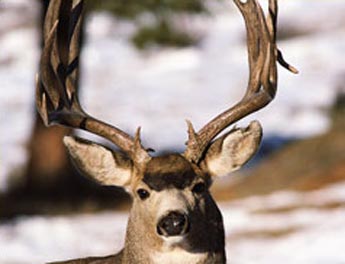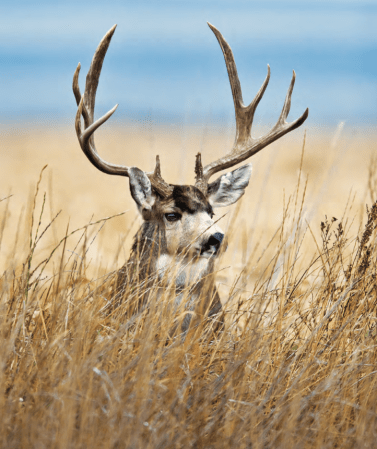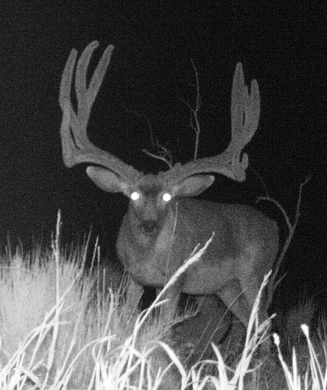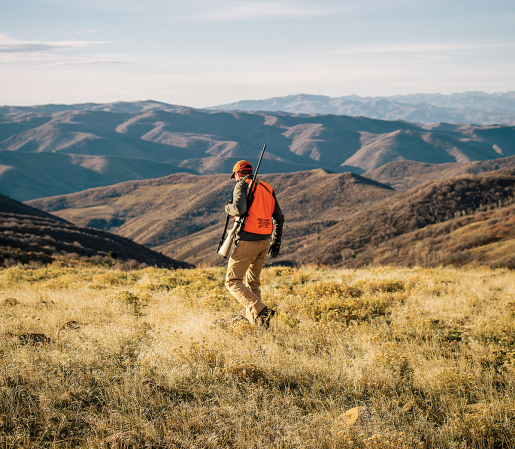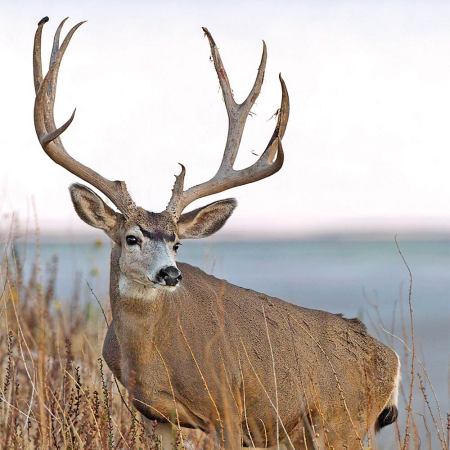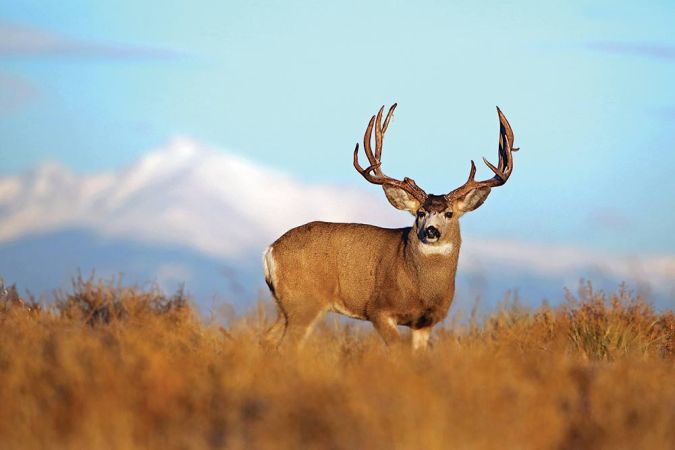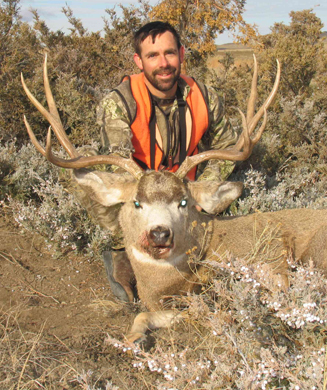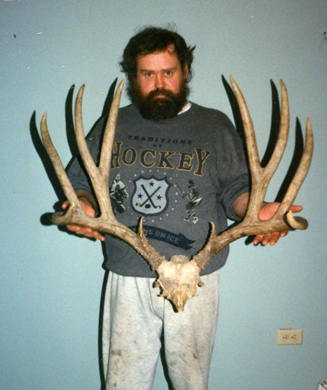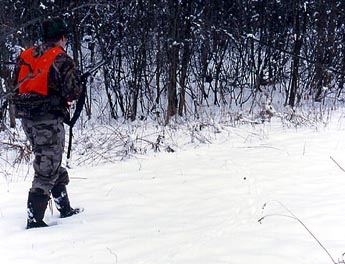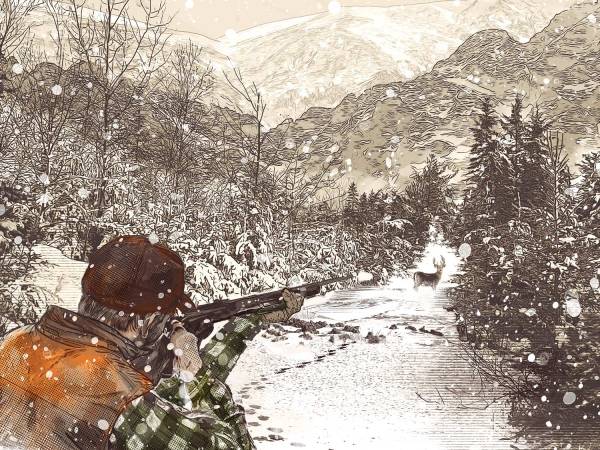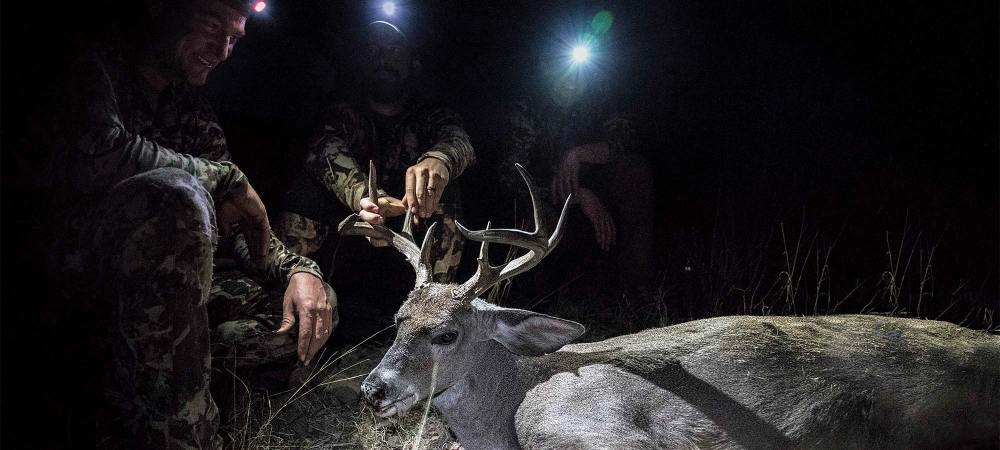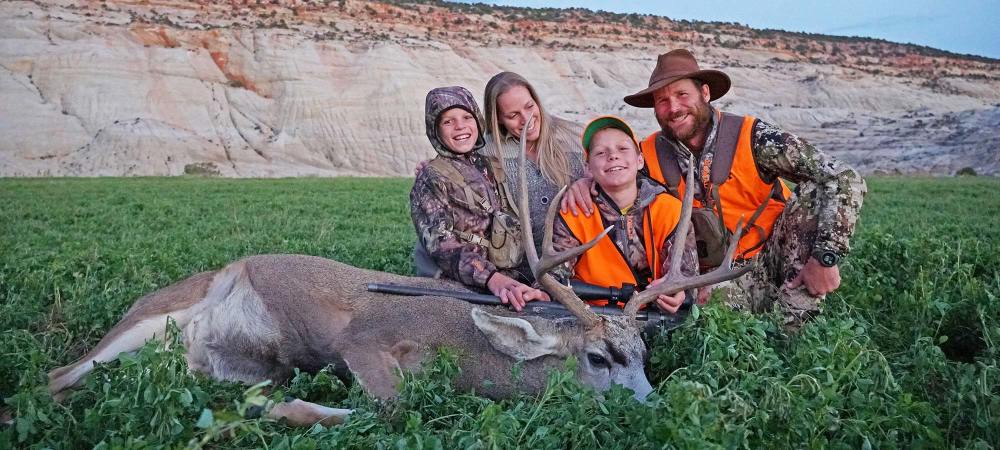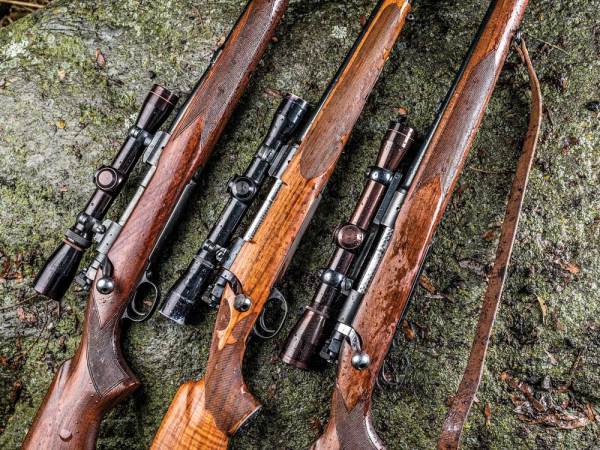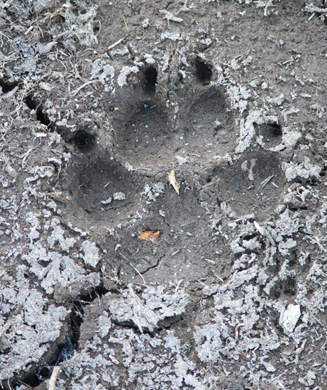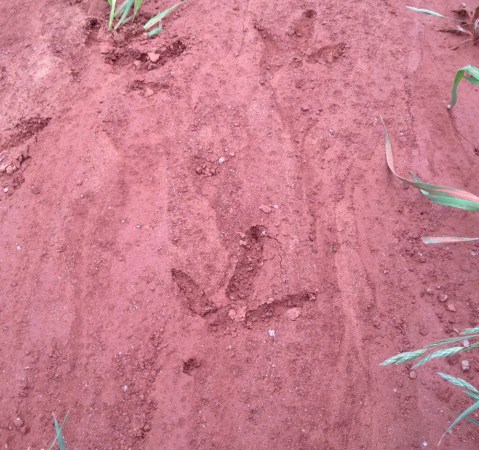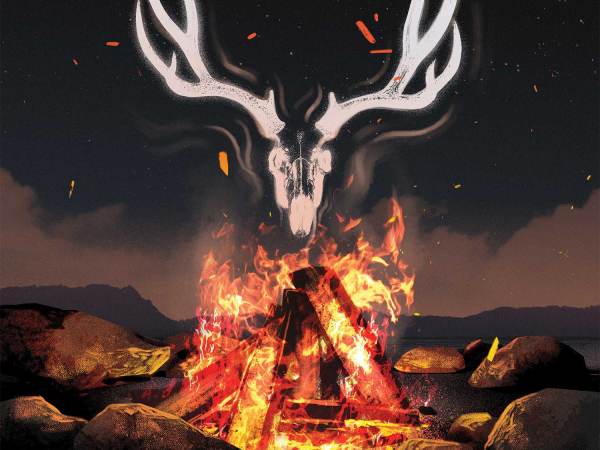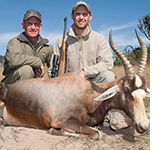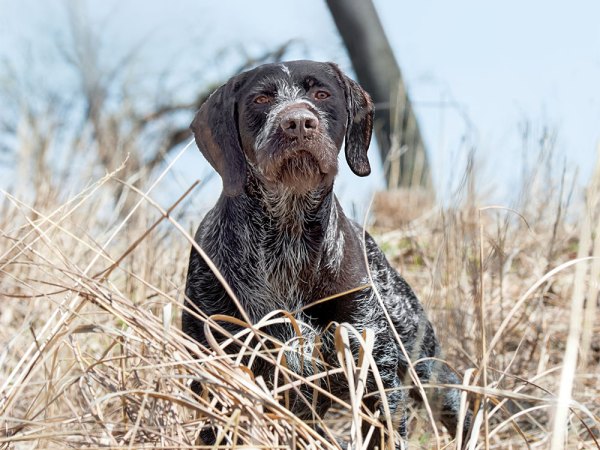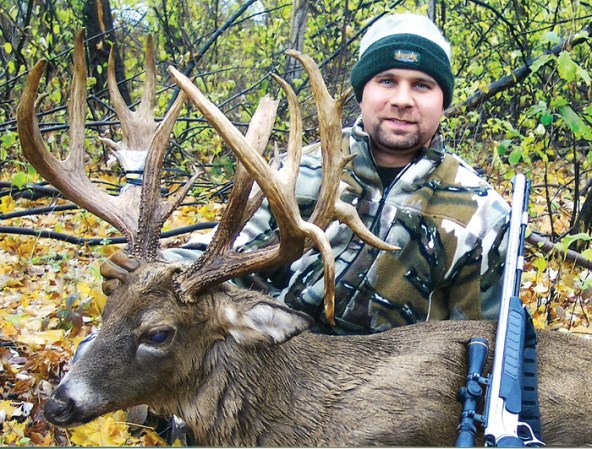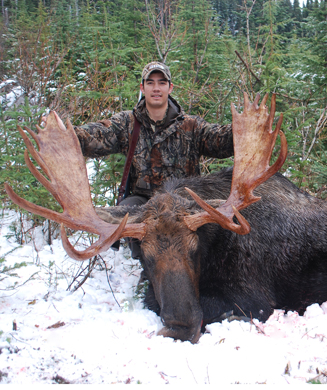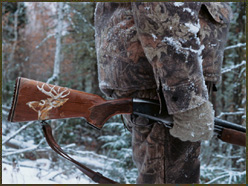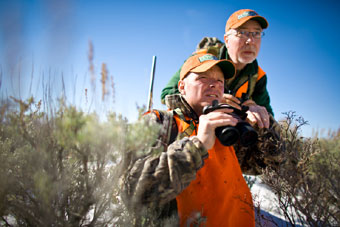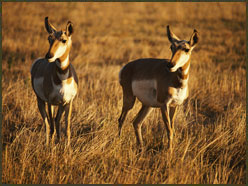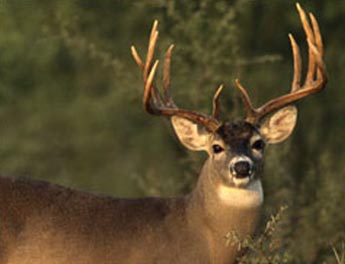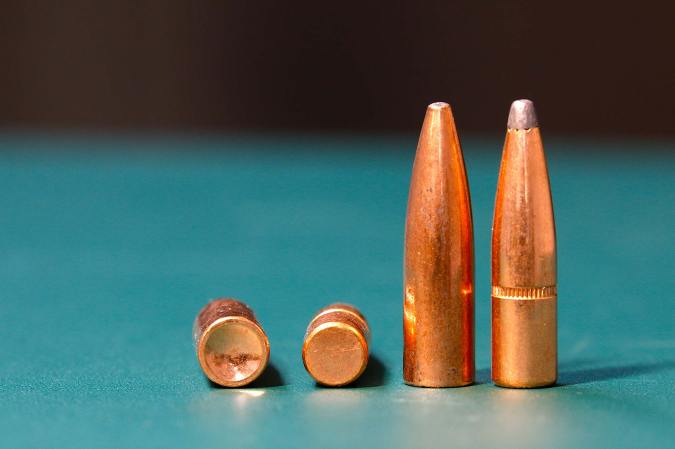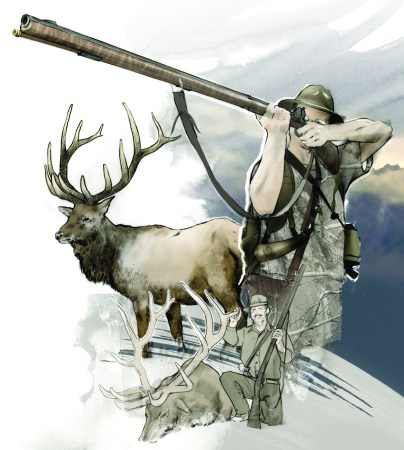In the pale dawn light, Valo Velazquez heads into a chill north wind blowing across Mexico’s Sonoran Desert.
A wiry, 50ish man with skin the patina of saddle leather, Valo moves quickly across the arid terrain, yet his footfalls are barely audible. His head swivels constantly. He notices something and gestures toward it.
I step forward, see a 2-inch scuff in hardpan sand and shrug.
“Chico burro,” Valo says. A young desert mule deer buck. I stare at him incredulously. I’m no slouch at tracking whitetails in snow, but this is as dry as land gets, and the scuff provides the barest indication that a deer hoof made it, and even less evidence of the animal’s gender and age.
A few minutes later, however, we spot a small herd of does moving through a thicket on a hillside ahead of us. A heavy-antlered, 26-inch-wide buck trails them. Back home in Montana, such a sight would be cause for eating crow, and an immediate effort at a shot.
But Valo grins a toothy grin and laughs. “Chico burro.”
Translation: It’s January and the rut is on in Sonora, one of the last places in North America that still holds a large concentration of giant muley bucks. In an area that is roughly the size of Oklahoma, fewer than a thousand people hunt deer every year. Most burros die of old age. So on this, the first morning of a six-day adventure, Valo and I are still hoping for an encounter with one of the desert’s legendary monsters.
I sling my rifle on my shoulder and repeat, “Chico burro.”
BIRTH OF A TRACKER
Valo chuckles. He walks past giant saguaro cacti, their arms reaching skyward as if begging for rain. January has been unseasonably hot. Valo wants to find another buck before they bed.
He leads us into an ancient river bottom with a loose, sandy bed. To my surprise, he ignores the many tracks in the soft sand and instead studies the banks.
“Deep, loose sand tells me nothing,” Valo explains later through a translator. “But on the banks, the buck has to climb up or down. Good places for sign.”
Sonoran mule deer can be hunted in several ways: glassing from atop a high-racked pickup truck or spot-and-stalk. Some even do it on horseback. The classic method, however, is tracking combined with still-hunting.
Valo Velazquez, I am learning, is a master at both.
Born in the Mexican state of Sinaloa, Valo moved north to Sonora as a young man, working ranches, wandering in the desert and learning to read animal sign. For the past six seasons, Valo has tracked on this 60,000-acre ranch for Mexican outfitter Yanko Garcia, who books his hunts through San Miguel Outdoors, the Texas agency that arranged my trip.
Walking the riverbank opposite Valo, I spot a fairly large track and gesture to it proudly. Valo comes over and gives it a quick glance, but shakes his head.
“Hace tres dias,” he says. Three days old.
Valo points to a track several feet away. “En la mañana.” This morning.
Feeling like a dunderhead, I nevertheless study the tracks. In the older imprint, wind has already marred the edges and blown in loose granules of sand. The newer track is crisper and rimmed with a sharp, chipped crust.
For the remainder of the morning I bumble after Valo, struggling to learn the language he is able to read so easily on the desert floor. We walk five or six miles, still-hunting and tracking in big loops toward a stock tank where cattle and deer water.
By 11 a.m. the desert becomes too hot for hunting We catch a ride back to the ranch house in a high-racked truck, spooking jackrabbits off ocotillo hillsides, flushing desert quail out of the bottoms, watching the birds swoop, land and skitter toward the ruins of a primitive hunting camp. The ground there is littered with flint arrowheads, artifacts of the hunting cultures that once dwelt here.
We top a rise and are able to see out a hundred miles in every direction. I think about the stupefying age of the place and then about the manner in which Valo had tracked that morning, the way he saw the invisible at a glance. I get the feeling that strange forces are at play here in the desert, impossibly old ones that I can’t begin to understand, even though my guide apparently does.
That hapless sensation still nags at me that afternoon as we hunt. In the heat, the deer don’t move until just before dark and even then we see only does.
The next morning is equally uneventful: no Grandes, no big tracks. But as we ride back to the ranch house in the full heat of the day, Rick Seagroves, a North Carolina hunter sitting next to me in the high rack, jumps to his feet.
“Grande!” he cries, pointing into the brush. “Grande!”
The truck skids to a stop on the desert two-track. I turn my head and see a herd of deer trotting away from us through the desert flora. Bringing up the rear is a Boone and Crockett–caliber muley buck about 29 inches wide, with excellent mass and deep forks.
In seconds, Seagroves and his guide are down and gone into the brush. I spot a spire of rocks downwind and make for it. Valo figures out what I’m up to and chases after me. We climb the spire in time to spot Seagroves as he shoots.
Seagroves’s buck easily scores in the mid-190s, a near-perfect typical four-by-four. Then we get back to camp and discover that Truett Budd, a Texas hunter in his 60s, has shot an even bigger one: a long-beamed typical that will easily score more than 200.
“I’ve never seen anything like my guide once we got on that buck,” Budd says. “I shot at the deer in the brush around eight a.m. and, no surprise, I missed. But he was with a hot doe and my guide knew it. We kept after him mostly by tracking her. We followed her for nearly four hours. We only saw the buck once, but my guide says he was there the whole time. Five minutes to noon I got a clear shot at him at one hundred and ninety yards.”
We head back out with three hours of daylight left. Seagroves’s guide, Carlos, is along when we crest a rise two miles from the water tank.
“Grande!” he cries.
I see a big buck leaping a barbed-wire fence. Valo and I bail out of the truck, pick up his track and try to make a move on him. But the wind’s wrong and we back out.
We circle the gigantic desert pasture the buck ran into to get the wind in our favor. I’m itching to get out of the high rack when I spot deer on a hillside about 400 yards out.
Several nice bucks are bird-dogging, noses to the ground, seeking a hot doe. I glimpse a big buck cruising in the brush. Five minutes later, he steps out and shakes his head, smacking each shoulder with his antlers.
“Treinta-uno!” Carlos says. Thirty-one-incher. “Shoot!”
Valo and I get down and stalk closer. At one point I have the Grande at less than 200 yards. He’s easily the best mule deer buck I’ve ever had in range. But to everyone’s disbelief–including Valo’s, including mine–I pass.
I’m here to track and still-hunt a buck in the desert, on foot, fair and square, to participate as much as a modern man can in a rite as old and seemingly as integral to the Sonoran Desert as the flint arrowheads that litter the ground on the ranch’s north side.
Later that night Texan Mike Gardner comes in with a buck that’s virtually the twin of the Grande I passed on. I sit by the fire pit, nursing a Tecate, studying the rack, wondering if this is another instance of the desert trying to teach me a lesson.
CLOSE ENCOUNTERS
The next afternoon, it’s blazing hot when we see a 29-incher trot into a bottom and disappear in vegetation less than 30 yards wide. We walk the bank, trying to jump him up. But he never jumps. We swing downwind and cut his track. He’s looped on us, just like a big whitetail would.
Valo has me sit high on the hillside as he tries to get the buck to leave the draw. He jumps him. The buck runs out the bottom and up the other side. I never see him.
Valo can’t believe it. I can’t believe it. I was almost directly across from the buck’s escape route. Valo shows me the track. The hooves are long, wide and blunted. The dewclaw marks are pressed into the sand. He didn’t just carry big antlers. He was heavy.
The next day we walk 13 miles and cut four big sets of tracks, but never get a look at any of the bucks that made them. I’m tired. My feet are sore. But I’m learning from each experience. I’m beginning to understand how small rocks dislodged from the sand on a hillside mean a buck just climbed it. The age of the tracks makes more sense, too. And I’m noticing how much sign is left aboveground: a broken twig, a nipped blade of grass, clumps of deer hair hanging off cactus thorn.
On Friday morning Valo and I come in from the northeast toward the stock tank. We walk five miles in the first three hours and don’t see a deer. All the tracks are old.
Around 9 a.m., we cut fresh tracks. Less than a hundred yards farther on, I spot a good buck, probably 27 inches with long tines. Twice I have the safety off on the buck, but he never gives me a shot. Then the wind swirls and he’s gone.
Deflated, I nevertheless keep after Valo as he circles downwind of the stock tank. Less than 200 yards from the tank, we are walking abreast perhaps 10 yards apart when I see a small doe and a fawn trot up on a rise. I catch a flash of a larger deer in the thicket ahead of us. I glance left at Valo, who’s holding his hands up over his head.
“Big?” I think he’s asking.
I shrug. Can’t tell.
He hurries us uphill after the doe and fawn. We crest the rise, looking down into an old creek bottom. A herd of nine does trots out of the brush 125 yards away. The buck steps out at 150 yards and looks back over his shoulder at his does and then at us.
He’s simply huge, easily over 300 pounds, with a massive seven-by-seven rack 6 or 7 inches outside his ears. The two sides of his massive rack rise a solid 2 feet before curving well inward, like the caved-in framework of some primitive hunting shelter.
“Muy, muy, muy grande,” Valo hisses.
I grab the shooting sticks from him, only to realize they aren’t extended. I throw them back to him and see the buck turn and start a lazy trot uphill, dodging in and out of ocotillo and palo verde like they were slalom poles on a ski run. He’s not waiting for his lady friends.
With cactus all around there’s no place to sit for the shot. So I wrap into my sling and swing on him off-hand at 220 yards. I settle the crosshairs on his brisket as he lopes into an opening. The sight picture feels good. I touch off.
The buck skids to a stop behind brush, swinging his rack dopily, and as the second round slides into the breech, I feel like the metaphysics of the desert is finally on my side, that I’ve hit him hard and he’s going to fall.
Instead, he leaps uphill into the thick stuff and is gone.
Valo groans, holding his index finger and thumb an inch apart. He had watched the shot through binoculars. The bullet struck the ground right in front of the buck’s brisket.
We run, trying to get on his track and find it: deep and bounding in 20-foot leaps. We try to stay with him, but he shows no sign of slowing. About a mile from the shot, he climbs onto a rocky spine and we lose him.
I’m less disappointed than I am completely shocked to have seen a deer like that. Valo kneels in a sandy spot and with his finger writes “34+!”
I nod, awed. World-class. Easily a buck that would score upward of 250 B&C.
Over the next day and a half, Valo and I head back into the desert three more times, working the terrain we figured the monster must have headed into. We spot several nice bucks, but not the one both Valo and I have become obsessed with. I pass on them all.
Around the fire Saturday night at the hunt’s end, I find myself staring off into the darkness, feeling the pull of the desert, thinking about the ruins of the primitive hunting camp, sad to have missed the buck of 10 lifetimes but entranced by the endless possibility and seeming eternalness of the place and its giant deer.
When I glance over at Valo, I catch the old tracker staring off into the darkness, too. Our eyes meet across the fire. He starts laughing and shakes his head as if he too is contemplating Sonora’s mysteries.
MORE PHOTOS!
Monster mule deer trophies & tracking sign
• outdoorlife.com/feb07

